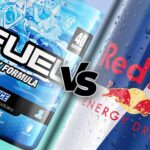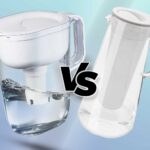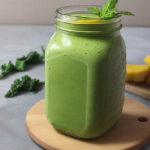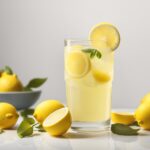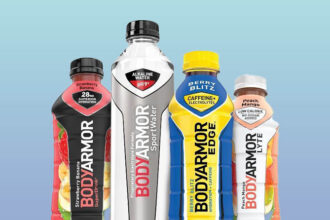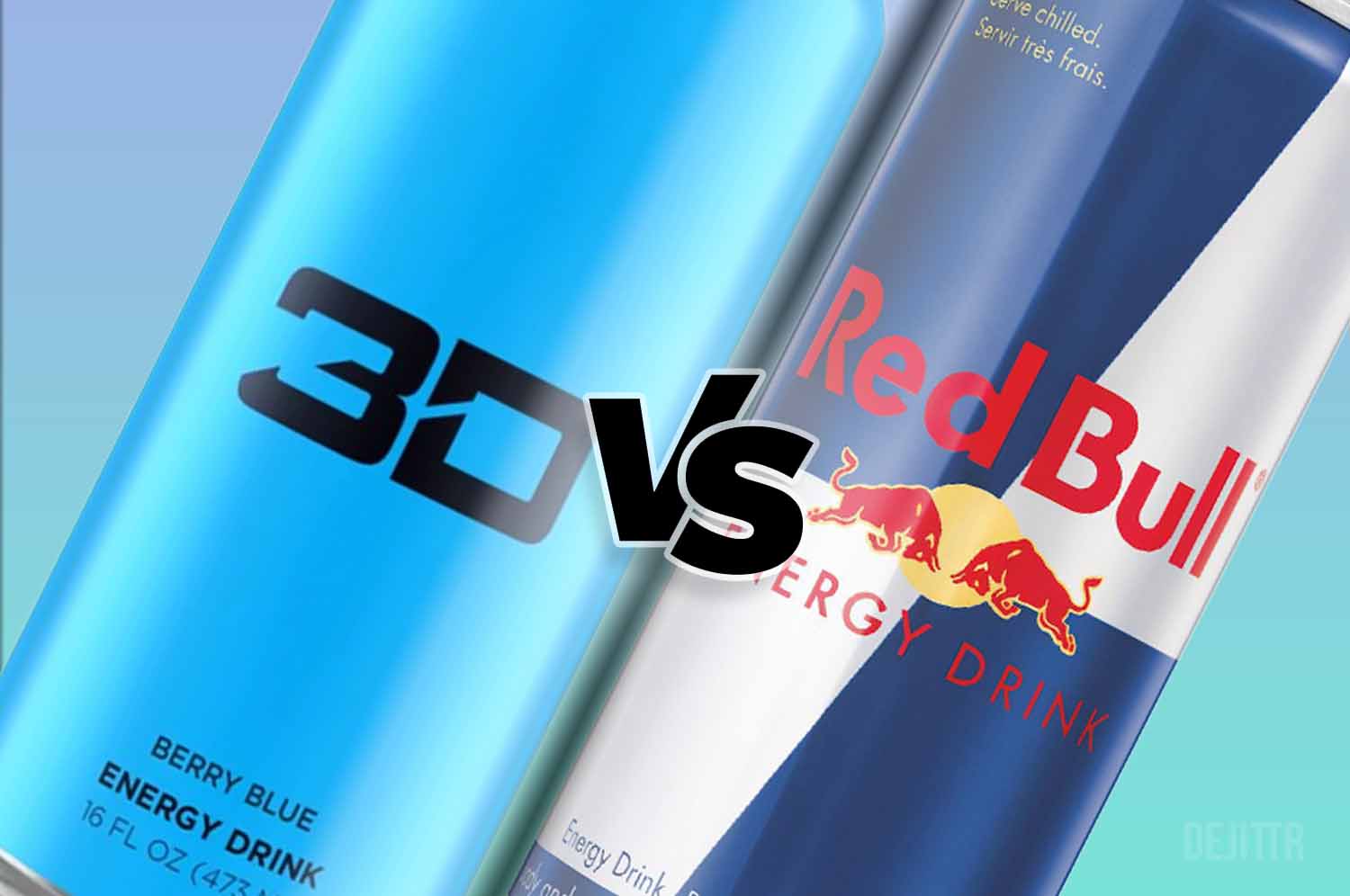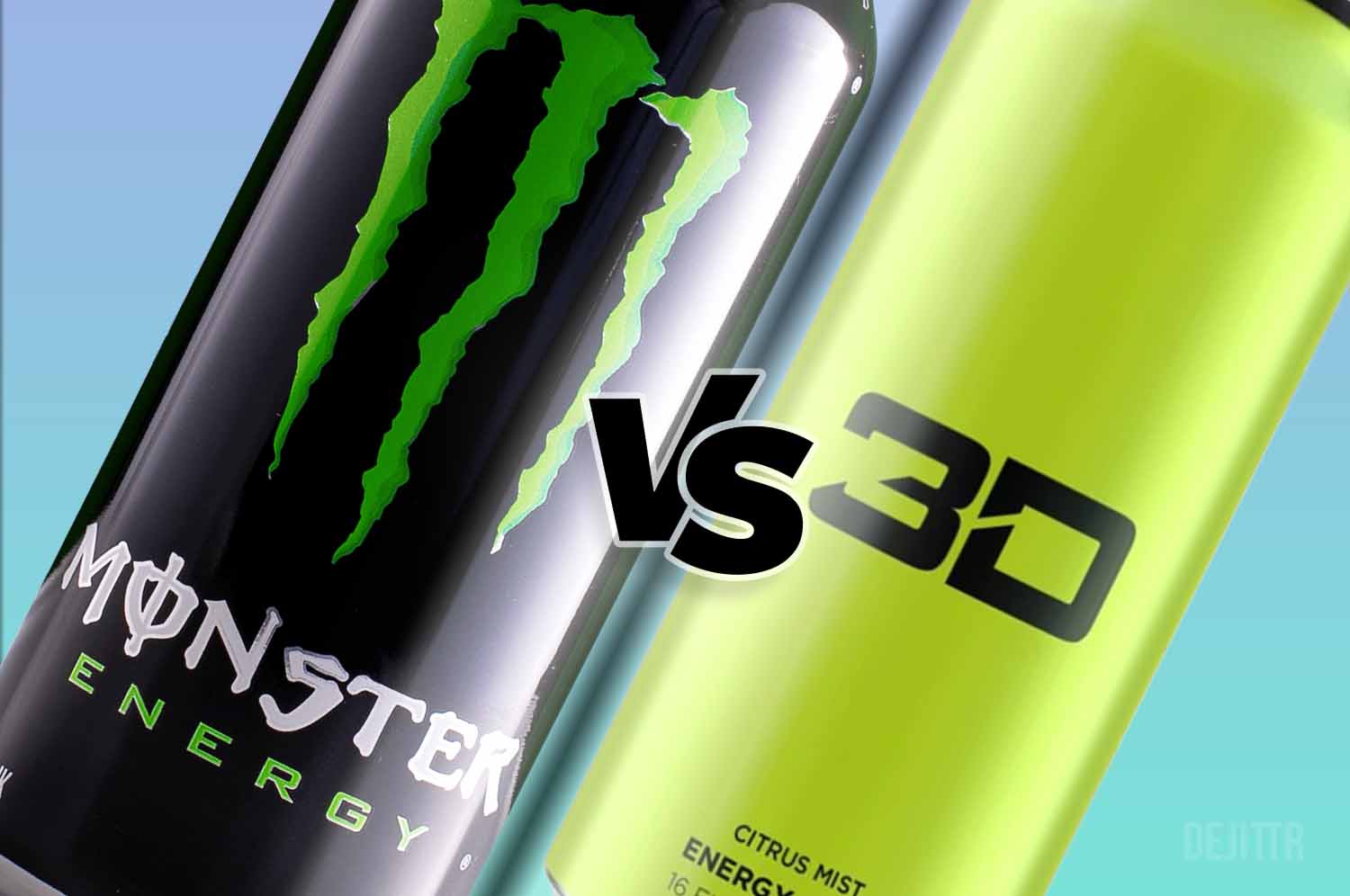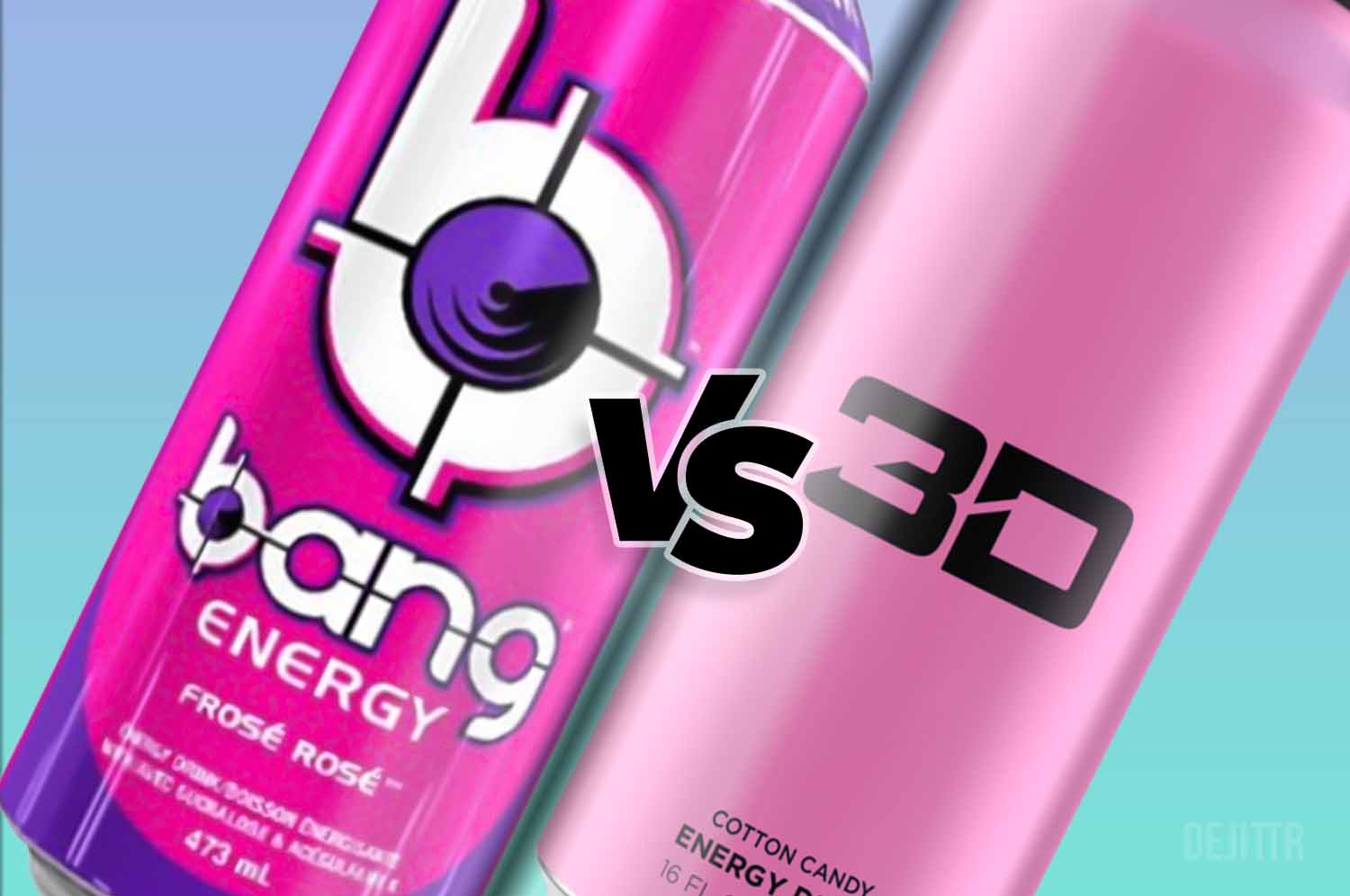For fitness-conscious people, food isn’t just food. It is divided by calories, macros, and even electrolyte content. But one categorization is often overlooked, especially when it comes to beverages. And that’s the hypotonic, hypertonic, and isotonic beverages.
Hypotonic beverages have less sugar and salt than the human body, while hypertonic has a higher concentration of sugar and salt than the average human body. Isotonic beverages have the same concentration of salt and sugar as human blood plasma.
In this article, you will discover how these three concentration differences affect the human body. You will find out more about the uses of each one alongside these categories’ limitations.
By the end of this post, you will know which beverage you should consume when alongside how you can spot and categorize any drink into one of these three categories. So, let’s get started with the effect of beverage concentration.
The Most Important Thing You Need To Know About Hypotonic, Hypertonic, and Isotonic Drinks
These beverages are categorized by their salt and sugar concentration. And before we get into the specifics of each one, we have to address how they affect the human body.
For this, let’s take the analogy of two cups of coffee.
One has espresso (concentrated coffee) in it. The other has coffee but with more water in it.
What happens when espresso is poured into the diluted coffee cup?
The cup starts having more coffee than water in it.
What happens when the watery coffee gets poured into the espresso cup?
The espresso gets diluted.
The takeaways are:
- The concentration of what’s poured changes the state of what the fluid is poured into.
- The concentration of the cup that is being poured into also matters.
Here’s how this applies to hypertonic, hypotonic, and isotonic drinks:
- Consuming hypertonic drinks is like pouring espresso into watery coffee. It makes blood more concentrated with sugar and salt.
- Consuming hypotonic drinks is like pouring watery coffee into espresso. It adds more water to the bloodstream than salt and sugar.
- Consuming isotonic drinks is like pouring watery espresso into a cup of watery espresso. It increases the overall volume of water, sugar, and salt without changing their concentration.
Finally, you must remember that the blood maintains its concentration to function. So when you pump it full of salt and sugar, it absorbs water from the body cells to dilute itself.
If you pump it full of water, it will pass it on as urine and move the rest into body cells until it is at an optimal level.
Here’s how blood and cells respond to each type of drink:
- When you drink a hypertonic beverage, the blood plasma sucks up water from the rest of the cells.
- When you drink a hypotonic beverage, the blood passes on the water to the rest of the cells.
- When you consume isotonic drinks, the blood plasma passes the water to the other cells only if they are deprived already.
By now, you already understand the most important thing you must know about these beverage types. But to have walkaround knowledge (that doesn’t require revisiting this article), you must know what’s discussed in the rest of this post.
Let’s start with how to tell a hypertonic solution from hypotonic and isotonic ones.
How do You Know if a Solution is Hypertonic?
You can know if a drink is hypertonic by:
- Checking its salt and sugar content
- Looking for “hypertonic” on its packaging, or
- Cross-referencing it with a list of hypertonic beverages
Each method has its own pros and cons. The most straightforward way of finding out that a drink is hypertonic is to simply read “hypertonic” on its packaging or in its marketing materials.
Unfortunately, most hypertonic beverages don’t come with this label. And this brings us to the second way of figuring it out.
A hypertonic drink is a drink that has more salt and sugar concentration than the human body’s average. So just looking at how densely a beverage is packed can help you realize whether it is hypotonic or hypertonic.
This approach can take a while, but it is the best way if you’re actually looking to choose one drink and have it over and over.
But the problem with this method is that you cannot try it out with every beverage every time you’re in a store. So if you like variety, you better go with the final method, which is the most user-friendly.
You can tell that a beverage is hypertonic if it belongs to one of the following categories:
- Soft drinks
- Energy drinks sweetened with sugar
- Fruit juice
- Lemonade
- Sweetened iced tea
The general rule of thumb is that the more concentrated a beverage is, the more likely it is to be hypertonic. And you can take any of these beverages and pour a teaspoon of them into a water bottle, which would become isotonic. It is all about whether the drink is more or less contracted than the fluids in your blood.
Since most beverages are typically uber-diluted, the average beverage you get from a store is almost always hypertonic. You do not need to specifically seek out hypertonic beverages, especially among energy drinks, since more of them are hypertonic.
This leaves most of the conversation to isotonic vs. hypotonic since these are the two categories specifically marketed towards athletes.
Hypotonic or Isotonic?
Hypotonic beverages are the opposite of hypertonic ones because they contain less salt and sugar than the human body.
Isotonic beverages contain similar salt and sugar concentrations to the average human body.
In both cases, the net effect is the same: the body doesn’t need more water to dissolve the non-water content consumed, and the water consumed replaces the water lost by the body.
In other words, any isotonic drink can be made hypotonic by adding a little water to it. But a hypotonic drink is harder to turn isotonic because its ingredients need to be increased to a precise concentration.
Is Saltwater Hypotonic or Hypertonic?
Saltwater is hypertonic because its concentration exceeds 10%, which is the average maximum in the human body.
If you drink salt water to increase sodium (an electrolyte) for hydration purposes, you will have the opposite effect instead. The higher salt content in water will result in water moving out of your cells and into the drink for dilution before digestion.
Seawater is a lower-concentration version of salt water and is generally isotonic.
Seawater has a 3.5% average salt content, so it is considered isotonic (but not safe to drink). That’s why it should not be used as an electrolyte supply beverage.
Examples of Hypotonic, Hypertonic, and Isotonic Drinks
Is your head spinning yet?
Mine too!
Enough with the medical speak, let’s take a look at some real-world examples of each type of drink (and the optimal scenario to consume):
| Beverage | Type | Best consumed when |
| Whole Foods Market Rise And Shine Juice | Hypertonic | For nutrition in the morning |
| Evolution Fresh Mighty Watermelon | Hypertonic | For nutrition in the morning. |
| Red Bull Energy Drink | Hypertonic | Before a workout or in place of coffee |
| Premier Protein Shake | Hypertonic | After a workout for nutrition and replenishment |
| Gatorade Original Thirst Quencher | Isotonic | For hydration and replenishment after exercise |
| Gatorade Zero Sugar Thirst | Isotonic | For hydration on a diet |
| Hydralyte Electrolyte Powder Packets | Hypotonic | To overcome dehydration |
| Nuun Sport: Electrolyte Drink Tablets | Hypotonic | To overcome dehydration |
Drink Timing and Content: Hypotonic, Hypertonic, or Isotonic
No drink is universally healthy or valuable, regardless of category. This section will explore which type of beverage is best for each situation.
In other words, you will discover when you should drink isotonic, hypotonic, and hypertonic drinks.
When to Drink Hypertonic Drinks?
You should consume hypertonic beverages when you need energy, want to supply your body with carbohydrates, and want to replenish your body’s glycogen stores, which are often depleted during high-intensity workouts.
This would suggest that hyperonic drinks are best consumed in the following situations:
- After pumping iron/lifting weights
- After high-intensity physical labor
When to Drink Hypotonic Drinks?
Drinks that do not contain as much sugar or salt as the human body’s average force water to move into cells. These drinks are, therefore, best for times when the cells are naturally depleted of water (i.e., dehydrated). Dehydration can occur during hot weather and intensive aerobic exercise.
This would suggest that hypotonic drinks are best consumed in the following situations:
- After aerobic exercise
- During a marathon
- During and after sports
- After a long period outdoors (in the summer)
- When you have diarrhea
When to Drink Isotonic Drinks?
Isotonic drinks have the same amount of salt and sugar as the human blood plasma, which means the water movement in and out of cells is not forced and happens entirely based on what the body needs.
If the body has more water than it should, the water will move out of the cells and into the drink, leading to urine formation. If the body has less water, it will absorb water from the beverage.
In most cases, the body gets hydrated from isotonic beverages.
This might make you wonder how these drinks differ from hypotonic ones. There are two ways to see an isotonic version: you can view it as a less diluted hypotonic beverage or a more balanced energy/hydration beverage.
You can drink an isotonic beverage if your body needs water and/or sugar. It is best after workouts precisely because you lose glycogen and water during intense exercise. However, that doesn’t mean isotonic drinks cannot be used for standard oral rehydration.
The best situations for isotonic beverage consumption include the following:
- After HIIT training
- During sickness-related water loss
- During a marathon
Is There a Way to Identify Which State Your Body Is In?
Unlike anabolic and catabolic states, the hypertonic, hypotonic, and isotonic states are much easier to identify.
You can tell if your body is in a specific state by identifying the symptoms of each state and considering isotonic the natural state of your body, which is the definition of isotonic, to begin with.
To simplify this, let’s see what each term means when associated with the body (and not a beverage):
| When? | Means? | And you should… |
| Your body is in an isotonic state | Your body has the regular amount of water | Continue hydrating as usual |
| Your body is in a hypertonic state | Your body is dehydrated | Consume a hypotonic or an isotonic drink |
| Your body is in a hypotonic state | Your body is over-hydrated | Stop consuming electrolytes and water. Let the body lose water naturally. |
How do Energy Drinks Affect Hypotonic, Hypertonic, or Isotonic States?
Energy drinks dehydrate the body, moving it from an isotonic to a hypertonic state. You should always hydrate yourself appropriately after consuming a regular energy drink or opt for an isotonic energy drink that won’t drain your water system.
Hydration beverages with caffeine can be more balanced than regular energy drinks. Still, when consuming these beverages, you should be careful about your natural hydration levels.
Recommended Hypotonic, Hypertonic, or Isotonic Drinks
There are many reasons why you might need to drink a hypotonic, hypertonic, or isotonic drink. Maybe you’re an athlete who needs to replenish electrolytes after a workout, or maybe you’re suffering from dehydration due to sickness. Whatever the reason, it’s important to know which type of drink is best for you.
This is by no means an exhaustive list, but here are our isotonic, hypertonic, and hypotonic drink recommendations:
The best hypotonic drinks are:
The best hypertonic drinks are:
- Whole Foods Market Rise And Shine Juice
- Evolution Fresh Mighty Watermelon
- Red Bull Energy Drink
- Premier Protein Shake
The best isotonic drinks are:
What Are the Best Natural Hypotonic, Hypertonic, and Isotonic Drinks?
Water is the best natural hypotonic drink because it contains no calories, has no side effects (when consumed within reason), and is needed for survival.
The best natural hypertonic drink is organic fruit juice because it contains non-processed carbohydrates and vitamins.
Coconut water is the best natural isotonic drink because it hydrates the body and has fewer side effects than overprocessed sports drinks.
What Does the Reddit Community Think About Hypotonic, Hypertonic, & Isotonic?
Reddit community has mixed reactions regarding hypotonic, hypertonic, and isotonic drinks.
While some downplay these beverages’ importance, others overplay them.
However, most Redditors believe one should pay attention to one’s thirst as an indicator of isotonic, hypertonic, and hypotonic states and select their favorite beverages accordingly.
Recap: Hypotonic vs. Hypertonic vs. Isotonic Drinks
Hypertonic drinks are drinks with plenty of sugar and salt.
(AKA, most beverages on the market today.)
Hypotonic ones have less water and sugar concentration than the human body, and isotonic drinks have the same sugar and water concentration as the human body.




